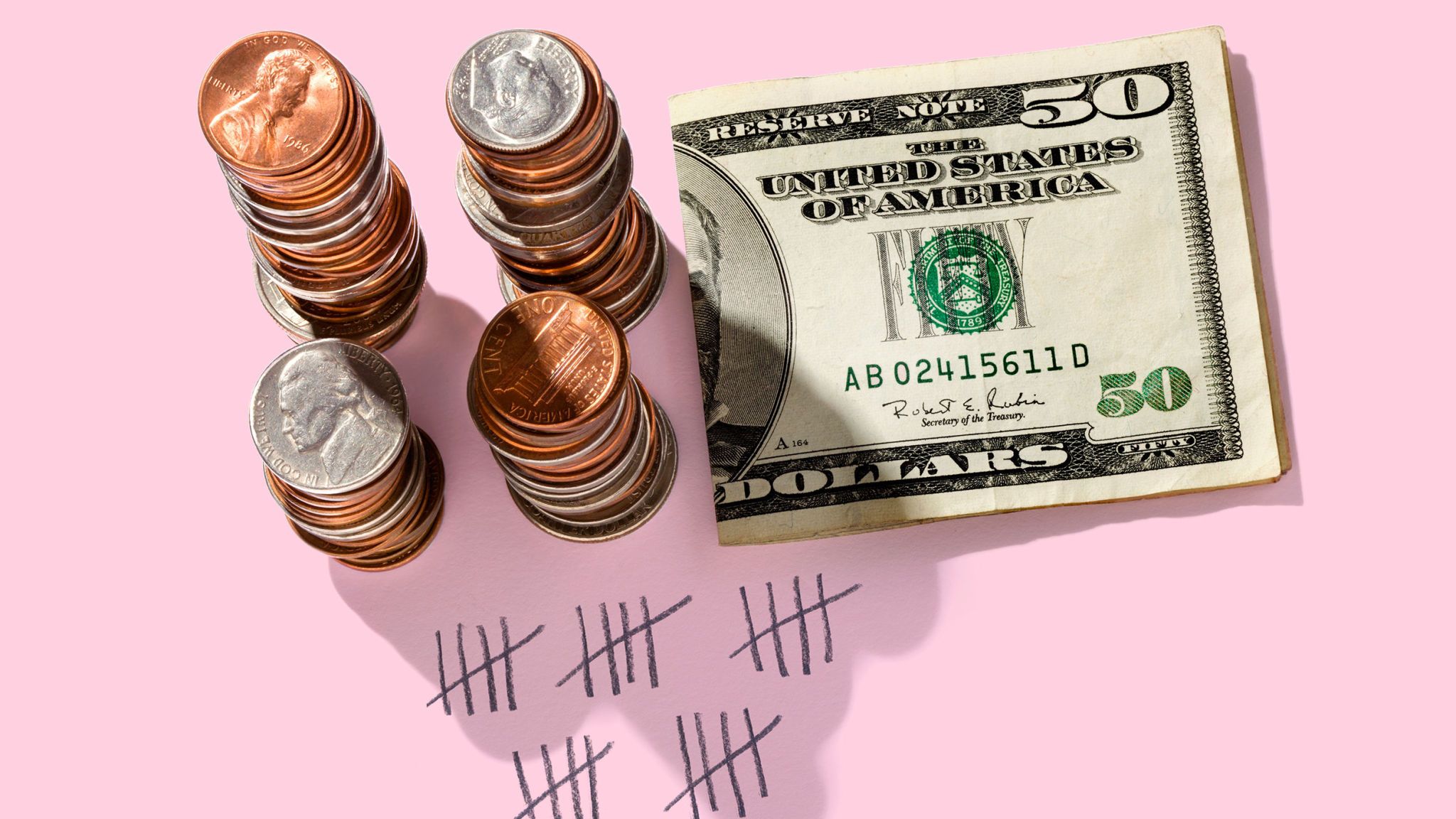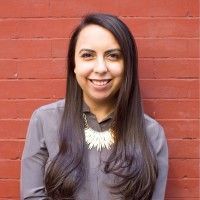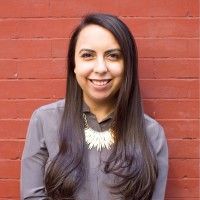The Definitive Guide to Budgeting Your Money in 2023
How to get it together with your hard-earned cash this year.


Money: We all want to know we're doing the right things with it. But no matter where you're at with this whole notion of budgeting (and adulthood, for that matter), it's possible to start getting your money situation under control now. Yes, even when the majority of your money is going towards student loans, pizza, and Netflix—no thanks to your ex who just changed his password.
The faster you can get your financial house in order and start thinking strategically, the more you can start planning for what's to come in your life. Make the time to perfect your budget with these helpful tips, so you can know exactly where your money's going and how to make the best use of it.
There are two main ways: Zero-based budgeting (or reverse budgeting) and the 50/30/20 guide. But before you decide which technique to use, the first step is to understand how much money comes in, and how much must come out, according to Money Under 30 advisor Michael Pruser. "Be honest about your first budget and track as closely as you can (to the dollar) the amount of your everyday expenses. If you don't know what your expenses are, track your spending for a month to get a good picture," he explains.
For zero-based budgeting, you're accounting for every single cent you come in contact with by allocating amounts to categories. So if you have $2,000 in take-home pay monthly, you're allocating a portion of that to rent/mortgage, fixed expenses (cable, phone, heat, etc.), and savings. You're also giving yourself a discretionary budget allotment (fun money). You work to get your "sum" to zero, until the $2,000 has been fully allocated. This is generally the go-to budget tactic for most people who live in urban areas, make a small amount of money, or are just trying to save as much as they can.
With the 50/30/20 technique, 50 percent of your income goes to fixed items: rent/mortgage, utilities, car payments, even streaming services—anything you're paying for consistently. The 30 is for financial goals, including emergency funds, debt, 401K or Roth IRA, and future purchases like a down payment. The 20 is for everything else: groceries, restaurants, shopping, hobbies, and so on. You pay yourself and the necessities first, then figure out how much you have for everything else. For some, this budgeting feels outdated, but it's nice to know how much you should, theoretically, be spending and saving. Don't dismiss it.
There are spinoffs of these budgeting tactics as well as ways to implement them (like the envelope system/cash only system) but it really comes down to allocating for things you have to pay for, then figuring out how much you have left.
A post shared by Mint (@mintapp)
A photo posted by on
This can vary, and no one configuration is right for everyone. But you don't need to make things complicated until you have extra money. According to Pruser: "After you've completed your budget, open a savings account and begin putting all extra money away immediately. Save until you have six months of expenses, which can protect you should you lose a job, have a medical emergency, etc. After that, congrats! You'll have disposable income."
Get exclusive access to fashion and beauty trends, hot-off-the-press celebrity news, and more.
You need a checking account for everyday expenses, and a basic savings account for emergency funds—a high-yield account (i.e. one with a high interest rate) you can't touch. You can automate the savings until you reach the goal. Another useful tool is a second savings account. Put, say, $1,000 or so in it that will account for "extra" expenses that could screw over your budget: car repairs, random medical bills, and wedding gifts, for example. It should be accessible—connected to your checking account, usually. If you take out money, you have to restore it.
Here's where it gets complex. You also need at least one retirement account. If your company doesn't match 401k contributions, you might want to look into a Roth IRA. For any other savings, another high-yield savings account can host extra, non-emergency funds for big, long-term goals. Think of it as a nest egg, and keep depositing. An HSA and FSA can be good if your medical bills are high. Don't be afraid of investment accounts, even though you may not have thousands of dollars to spare. A trained financial advisor can be an asset, but there are other, cheaper resources.
RELATED STORY

A Roth IRA vs. a 401K: Exactly What to Consider
"
One of the best ways to get started is to use a robo-advisor like Stash, Betterment, or Wealthfront," says Pruser. "For a minuscule fee (typically 0.25 percent of your investment per year) you'll have professionals invest your money in specific funds they've created. They allow you to set your risk preference and have long histories of strong returns. The greatest asset for young investors is that you can follow along and learn all about investing while your money is in good hands. Then, if/when you're comfortable, invest on your own."
Ellevest specializes in investing for women, and gender does in fact matter (women make less than men, they take more time off, and live longer). To learn more about their investment services, click here.
A post shared by Money Under 30 (@30moneyunder)
A photo posted by on
By this point in the age of smartphones, there are a ton of money apps—Acorns for investments, Venmo for money transfer, Ibotta to pay you for shopping (although be careful with this one, because it can incentivize greater spending). But the be-all-end-all is one you've likely heard of—Mint.
Says Pruser, "
Mint is still the best for most consumers. It links to just about every financial institution you can imagine. Plus, it's free. If you're in need of something with a little more functionality and are willing to pay a couple of bucks a month, go with PocketGuard: More features, better savings recommendations."
I won't lie, some of these suggestions might come off as unpleasant. But hey—you want to save money, right? And these are some big-ticket items that people, on average, tend to overspend on.
There are (figuratively speaking) a million ways to make extra money. Smart career and work choices can get you to financial wellness faster. Here are just a few ideas:
You've totally got this—now get out there, budget well, save a bunch, and spend occasionally.
For more stories like this, including celebrity news, beauty and fashion advice, savvy political commentary, and fascinating features, sign up for the Marie Claire newsletter.
RELATED STORIES

Women Need to Think About Investing Differently Than Men
RELATED STORIES

The $195,000 Couple Who Met on Tinder and Never Fight About Money
RELATED STORIES

60 Cheap Date Ideas for Couples on a Budget

Samantha Leal is the Deputy Editor at Well+Good, where she spends most of her day thinking of new ideas across platforms, bringing on new writers, overseeing the day-to-day of the website, and working with the awesome team to produce the best stories and packages. Before W+G, she was the Senior Web Editor for Marie Claire and the Deputy Editor for Latina.com, with bylines all over the internet. Graduating from the Medill School of Journalism at Northwestern University with a minor in African history, she’s written everything from travel guides to political op-eds to wine explainers (currently enrolled in the WSET program) to celebrity profiles. Find her online pretty much everywhere @samanthajoleal.